10 Herbs that are RECIPE STAPLES
As a follow-up to another of this week’s articles (Nature’s “Medicine Cabinet” and “Fountain of Youth!”), I thought it would be really helpful to share some information on the use of a few fresh herbs. After lots of research, I found a super tutorial on www.greatist.com.
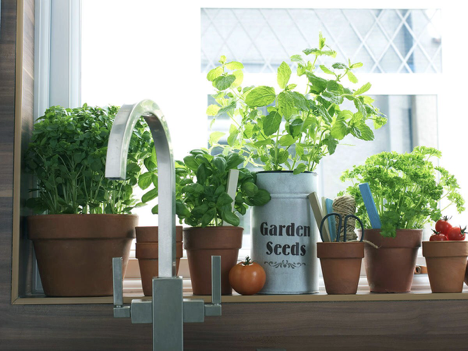
According to the GREATIST gurus, fresh herbs fall into two main categories: soft herbs (you can cook and eat the stems) and woody herbs (you’ll have to pluck ’em off the inedible stems before you eat ’em). Here are 10 widely used herbs that are known as recipe staples.
SOFT HERBS:
Basil: With big leaves, distinctly refreshing aroma, and sweet flavor, it’s common in Italian, Mediterranean, and Asian dishes — from pasta sauces (like pesto) to caprese salad and Thai stir-fries.
Parsley: There’s flat-leaf and French curly-leaf, both having a mild, fresh flavor. Fresh parsley, inexpensive and versatile, is a solid fridge staple. Stir it into tomato sauce, sprinkle it on tilapia, or chop the flavor-packed stems and add them to chorizo for extra oomph. And if you want an easy calcium boost, add a handful to your morning smoothie.
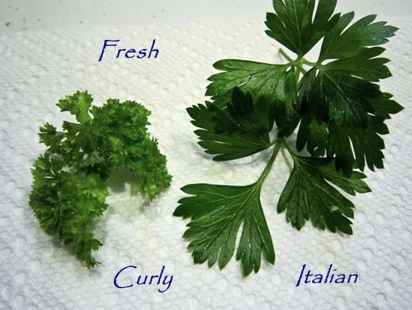
Cilantro: Cilantro is the Spanish name for coriander (which is the dry seeds of the plant). Its citrusy flavor profile makes it a popular addition to guacamole, salsa, and soups. Because some people carry a gene that makes it taste like soap, folks either love or hate it.
Tarragon: Tarragon is pungent and flavorful (tasting somewhat like licorice). French dishes rely heavily on it — chicken tarragon, specifically, is delicious and tastes fancy without much effort.
Mint: New gardeners, take notice: This highly aromatic herb grows easily and in bounty. Mint has a distinct/invigorating flavor that jazzes up both sweet and savory dishes and teas. It’s high in health benefits, so adding it to a daily smoothie is a smart and tasty idea.
WOODY, HARDY HERBS:
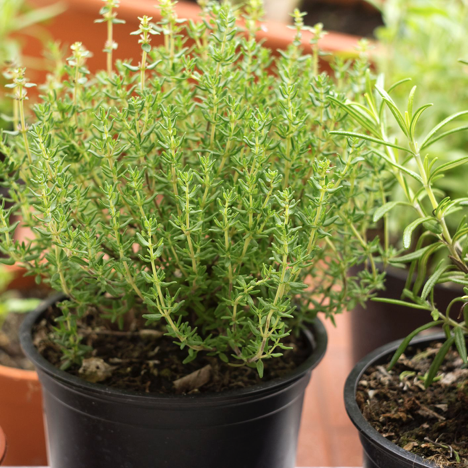
Rosemary: Rosemary is an evergreen herb that smells and tastes like Christmas. Its robust flavors make it a great addition to roast chicken, soups, and stews.
Thyme: Another fragrant herb with slight floral notes. It’s great for adding to recipes early on because it can handle long cooking times, which also helps mellow out its overpowering flavor. Use it in chicken stock or on braised lamb.
Oregano: Fresh oregano gives you the best of both worlds — its flavors are earthy yet bright, with slight peppery notes (the leaves also hold their shape well). Chop some and bake it into fresh dinner rolls, add it to your turkey burger mixture, or sprinkle it over a savory cantaloupe salad with balsamic reduction.
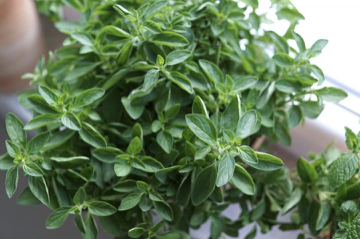
Chives: A close cousin of scallions and onions, chives have long, green, hollow stems and a not-too-overwhelming oniony flavor. They’re great to add to dips, soups, omelets, and potato salad (for both taste and a pretty garnish).
Sage: Sage has a very strong scent and an earthy flavor that softens when the herb is cooked or even fried. It’s a terrific flavor-enhancer in stuffings, roast pork, and butternut squash.
Here’s some more www.greatist.com information you may not have known: When you’re out of a certain herb, you can often swap it for another. When swapping herbs, start with less and make sure you like the taste (you can always add more to adjust, but you can’t remove!). You might want to save this simple chart on the subject.
Swapping Herbs in a Pinch
Tarragon and Herbes de Provence interchange.
Cilantro and Parsley interchange.
Basil and Mint interchange.
Rosemary and Thyme interchange.
Oregano and Marjoram interchange.
Chives and Scallions interchange.
I’ll close with a terrific recipe for Chimichurri. This iconic Mexican sauce gets its vibrant green color from lots and lots of fresh parsley. This version from Muy Delish also uses dried herbs, including oregano and thyme, along with heaps of garlic, olive oil, and other goodies. Use it atop grilled meats and veggies — perfection.
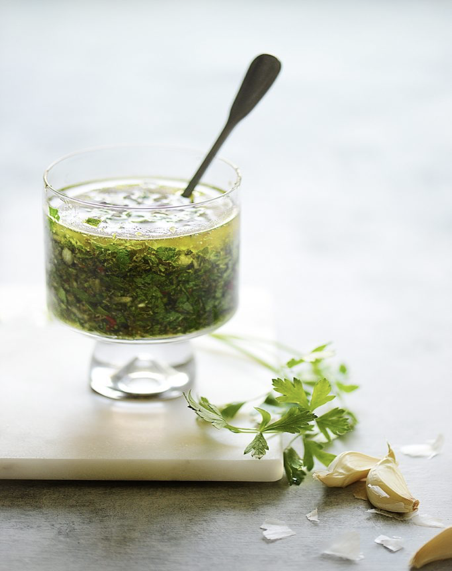
2 cups packed, fresh parsley minced
9 cloves (medium) garlic peeled
1 tablespoon dry oregano
1/2 teaspoon dry thyme (optional)
1/2 teaspoon chili powder
3/4 teaspoon crushed red pepper flakes
1 teaspoon granulated onions
3/4 to 1 tablespoons fresh ground pepper
2 teaspoons kosher salt
1/2 cup avocado or olive oil
2 tablespoons white vinegar
1/4 cup red wine vinegar
Directions:

According to the GREATIST gurus, fresh herbs fall into two main categories: soft herbs (you can cook and eat the stems) and woody herbs (you’ll have to pluck ’em off the inedible stems before you eat ’em). Here are 10 widely used herbs that are known as recipe staples.
SOFT HERBS:
Basil: With big leaves, distinctly refreshing aroma, and sweet flavor, it’s common in Italian, Mediterranean, and Asian dishes — from pasta sauces (like pesto) to caprese salad and Thai stir-fries.
Parsley: There’s flat-leaf and French curly-leaf, both having a mild, fresh flavor. Fresh parsley, inexpensive and versatile, is a solid fridge staple. Stir it into tomato sauce, sprinkle it on tilapia, or chop the flavor-packed stems and add them to chorizo for extra oomph. And if you want an easy calcium boost, add a handful to your morning smoothie.

Cilantro: Cilantro is the Spanish name for coriander (which is the dry seeds of the plant). Its citrusy flavor profile makes it a popular addition to guacamole, salsa, and soups. Because some people carry a gene that makes it taste like soap, folks either love or hate it.
Tarragon: Tarragon is pungent and flavorful (tasting somewhat like licorice). French dishes rely heavily on it — chicken tarragon, specifically, is delicious and tastes fancy without much effort.
Mint: New gardeners, take notice: This highly aromatic herb grows easily and in bounty. Mint has a distinct/invigorating flavor that jazzes up both sweet and savory dishes and teas. It’s high in health benefits, so adding it to a daily smoothie is a smart and tasty idea.
WOODY, HARDY HERBS:

Rosemary: Rosemary is an evergreen herb that smells and tastes like Christmas. Its robust flavors make it a great addition to roast chicken, soups, and stews.
Thyme: Another fragrant herb with slight floral notes. It’s great for adding to recipes early on because it can handle long cooking times, which also helps mellow out its overpowering flavor. Use it in chicken stock or on braised lamb.
Oregano: Fresh oregano gives you the best of both worlds — its flavors are earthy yet bright, with slight peppery notes (the leaves also hold their shape well). Chop some and bake it into fresh dinner rolls, add it to your turkey burger mixture, or sprinkle it over a savory cantaloupe salad with balsamic reduction.

Chives: A close cousin of scallions and onions, chives have long, green, hollow stems and a not-too-overwhelming oniony flavor. They’re great to add to dips, soups, omelets, and potato salad (for both taste and a pretty garnish).
Sage: Sage has a very strong scent and an earthy flavor that softens when the herb is cooked or even fried. It’s a terrific flavor-enhancer in stuffings, roast pork, and butternut squash.
Here’s some more www.greatist.com information you may not have known: When you’re out of a certain herb, you can often swap it for another. When swapping herbs, start with less and make sure you like the taste (you can always add more to adjust, but you can’t remove!). You might want to save this simple chart on the subject.
Tarragon and Herbes de Provence interchange.
Cilantro and Parsley interchange.
Basil and Mint interchange.
Rosemary and Thyme interchange.
Oregano and Marjoram interchange.
Chives and Scallions interchange.

Chimichurri
Ingredients:
2 cups packed, fresh parsley minced
9 cloves (medium) garlic peeled
1 tablespoon dry oregano
1/2 teaspoon dry thyme (optional)
1/2 teaspoon chili powder
3/4 teaspoon crushed red pepper flakes
1 teaspoon granulated onions
3/4 to 1 tablespoons fresh ground pepper
2 teaspoons kosher salt
1/2 cup avocado or olive oil
2 tablespoons white vinegar
1/4 cup red wine vinegar
Directions:
1. Place the parsley in a glass bowl or mason type jar.
2. Crush the garlic in a mortar to almost a paste consistency. Add to the fresh parsley.
3. Add the rest of the ingredients and mix well. Cover with plastic wrap of a lid and refrigerate for 24 to 48 hours to infuse all of the flavors together.
4. Before serving, bring to room temperature.
5. Store refrigerated in a sealed container for up to two weeks.
2. Crush the garlic in a mortar to almost a paste consistency. Add to the fresh parsley.
3. Add the rest of the ingredients and mix well. Cover with plastic wrap of a lid and refrigerate for 24 to 48 hours to infuse all of the flavors together.
4. Before serving, bring to room temperature.
5. Store refrigerated in a sealed container for up to two weeks.
Recipe formatted with the Cook'n Recipe Software from DVO Enterprises.
Sources:
- www.cookinglight.com
- www.pinterest.com
- www.thespruce.com
- www.almanac.com
- www.muydelish.com
 Alice Osborne
Alice Osborne
Weekly Newsletter Contributor since 2006
Email the author! alice@dvo.com
